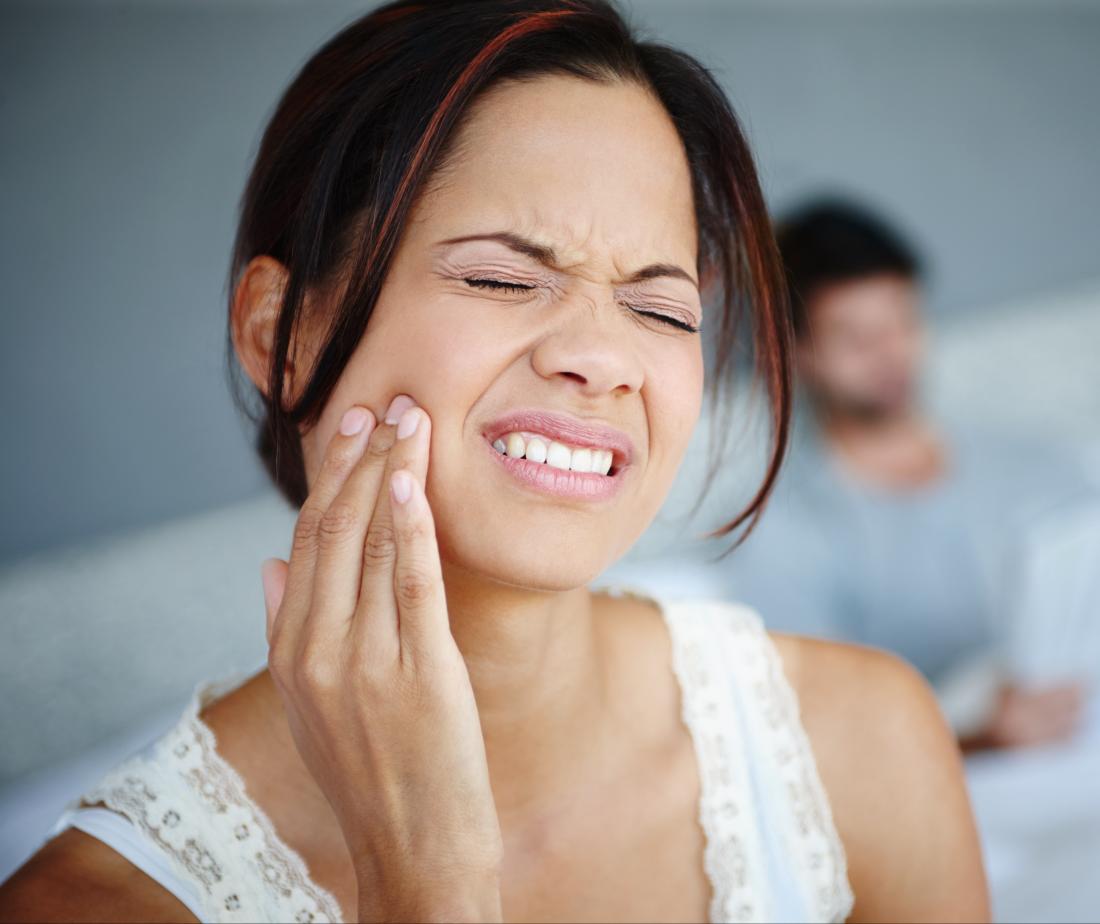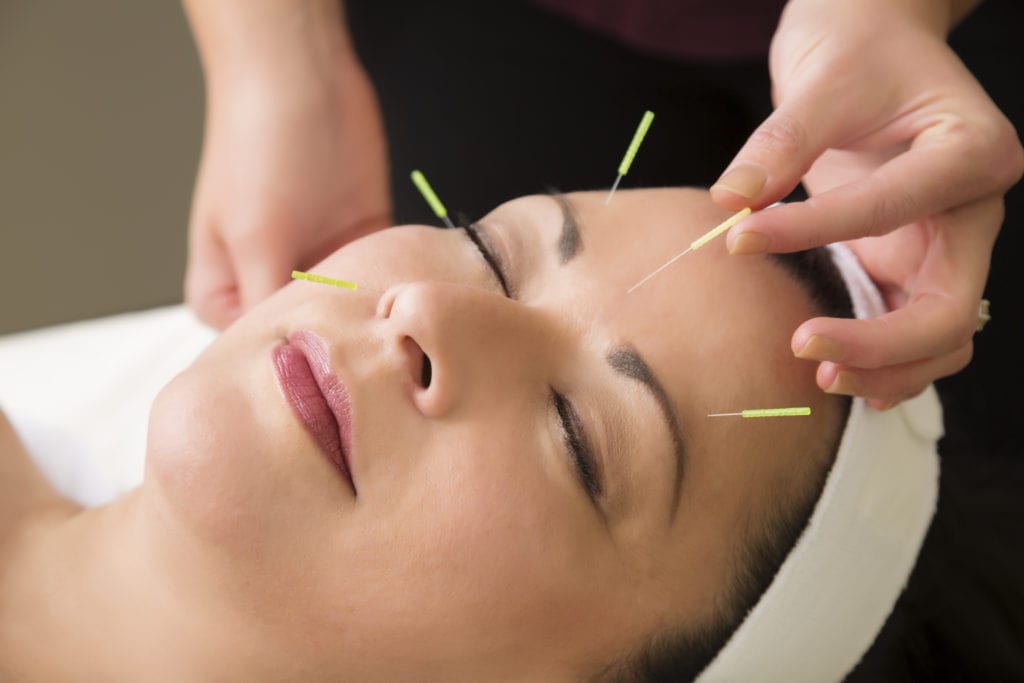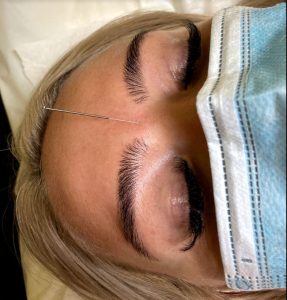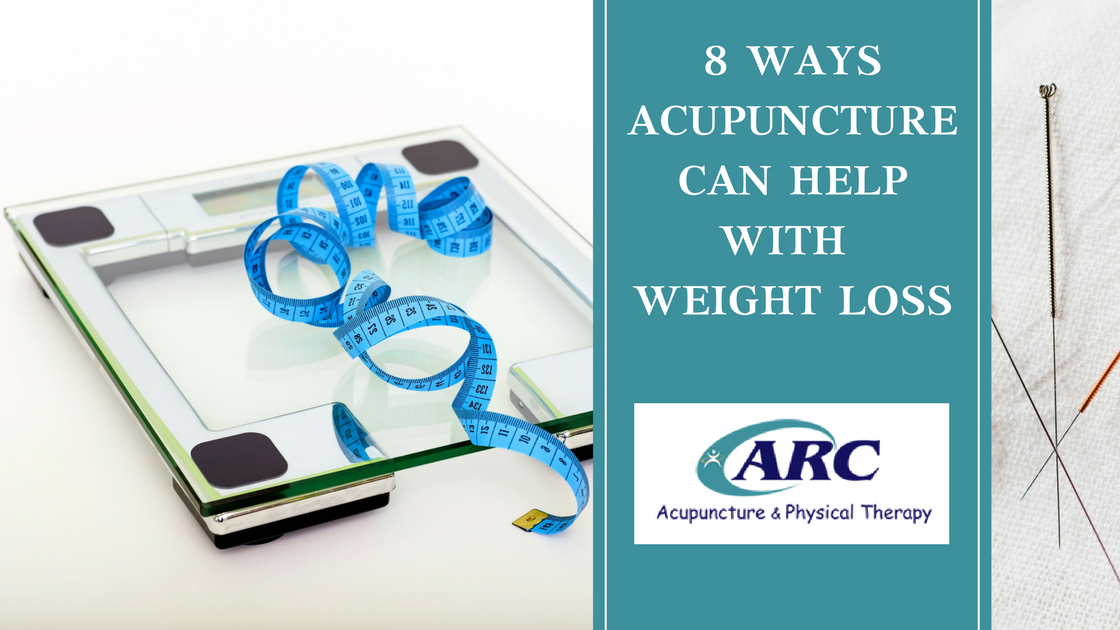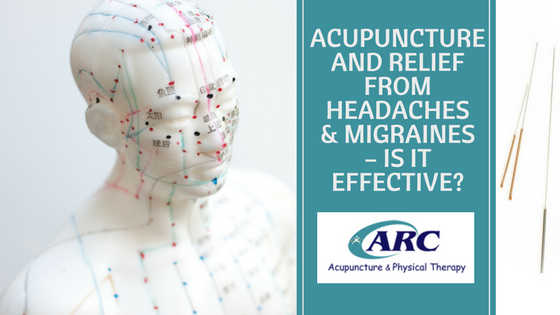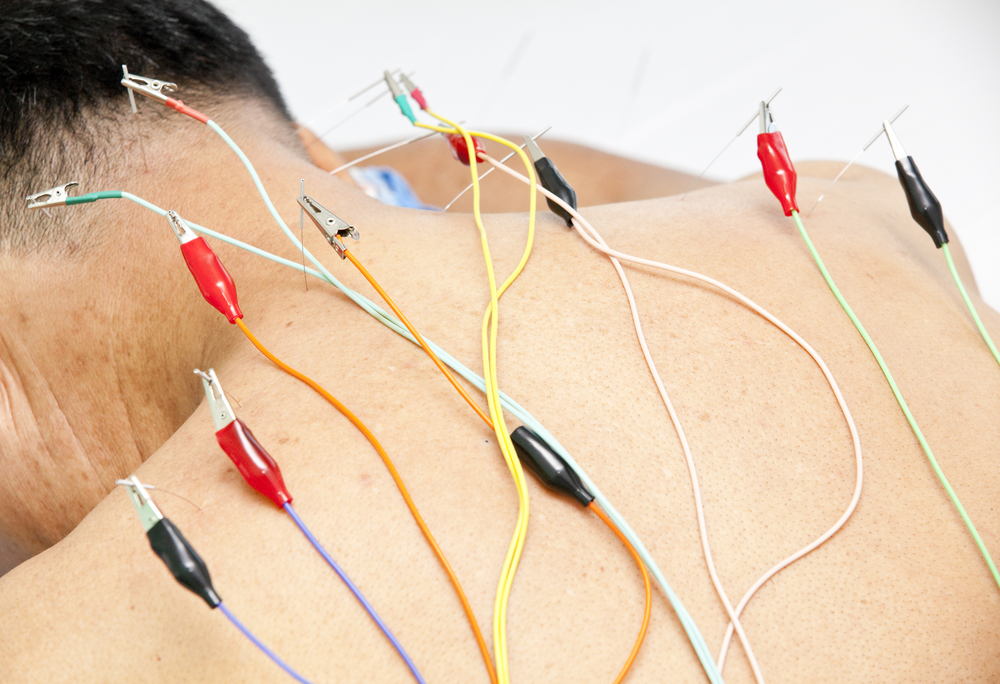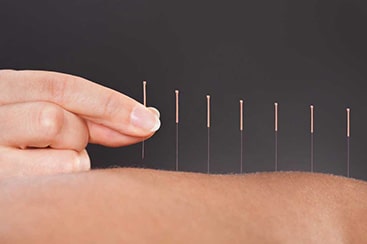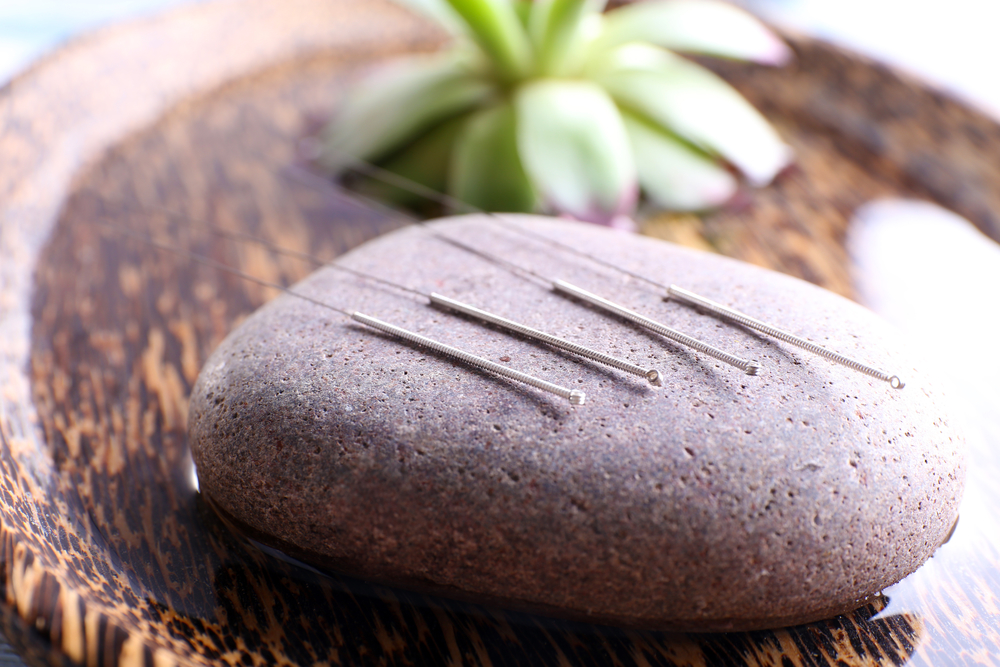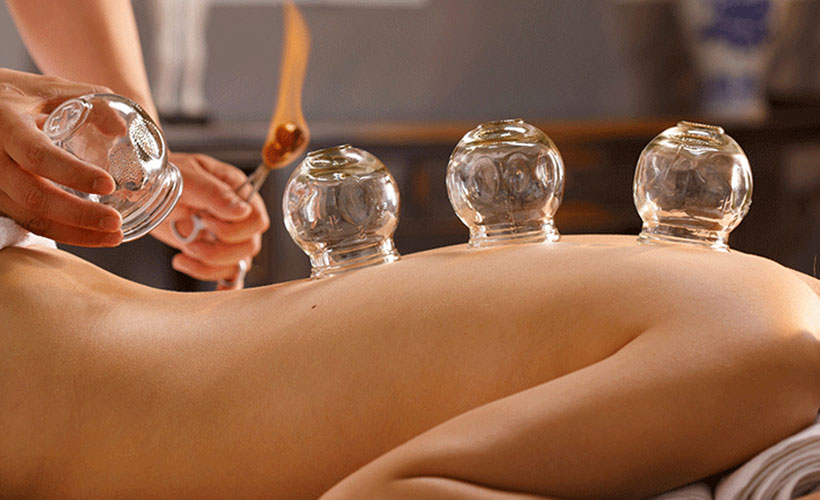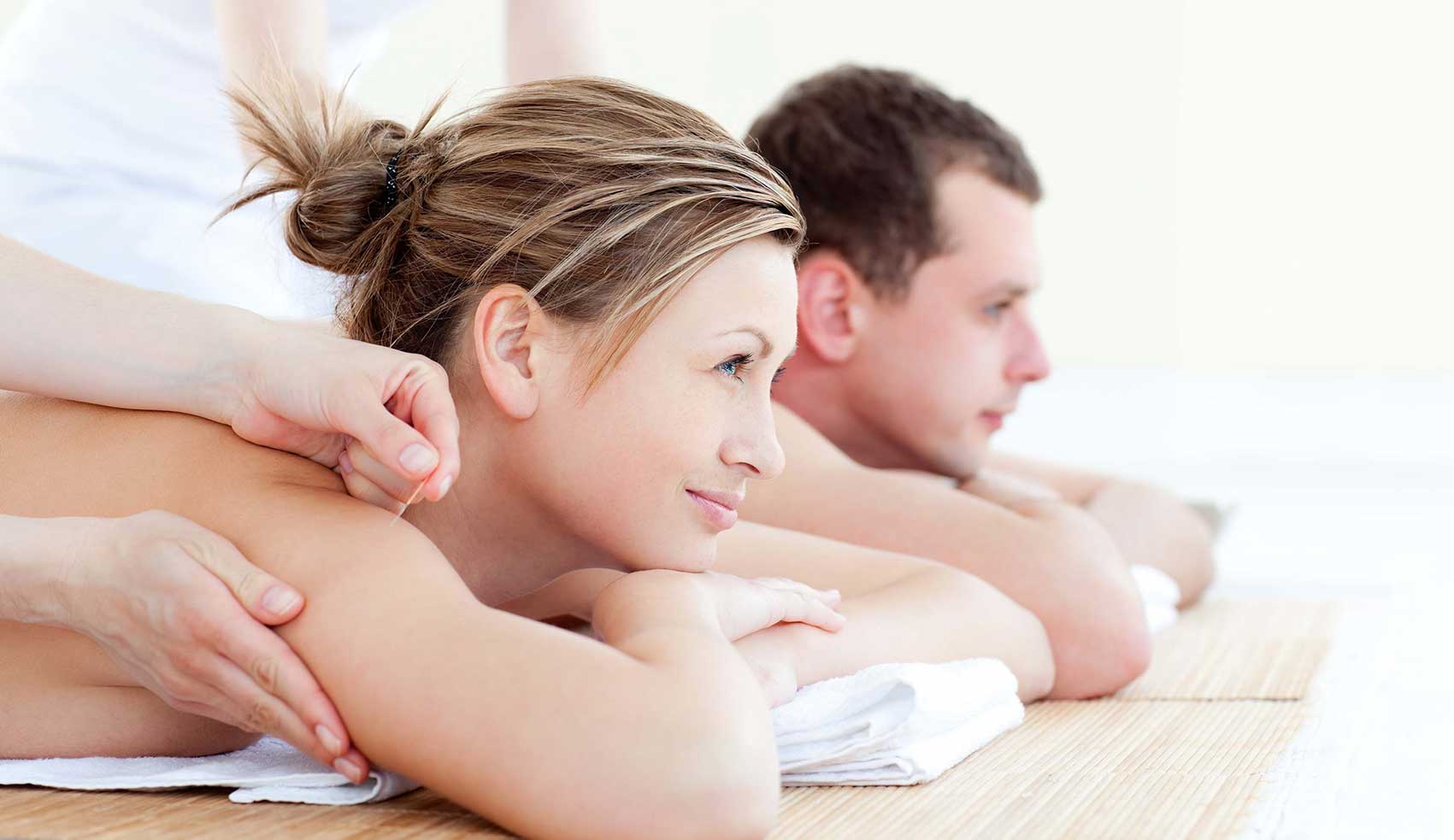The widespread use of acupuncture for weight loss is the result of recent research developments showing that this approach can be successful. As reported by Pacific College of Oriental Medicine, recent studies have shown that when acupuncture is combined with traditional methods of weight loss, patients lose more weight. In these cases, one to three acupuncture weight loss sessions can be safe and effective in helping people achieve reasonable weight loss goals.
Acupuncture is an ancient traditional Chinese medicine (TCM) practice that involves inserting thin needles into very specific points on the body. These needles are placed in order to stimulate key nerves in the body that regulate energy and metabolism, as well as numerous other factors that can affect your health. To promote weight loss, the acupuncturist focuses on the endocrine system and kidneys, which are addressed to treat water retention and to stimulate nerve and hormonal balance. The spleen and thyroid gland are also targeted to effect sugar and hormonal balancing. Finally, the adrenal and ovary glands are included to treat weight gain due to menopause or premenstrual syndrome (PMS).

The acupuncture needles are inserted into the skin about ¼-inch deep, up to a ½- inch, depending on the style of acupuncture and the desired effects. According to the tenet of TCM, this practice helps to improve the flow of Qi (vital energy) through the body.
How Does Acupuncture Help In Weight Loss?
Acupuncture can help with weight loss by regulating hormone production, improving the metabolism, optimizing digestion, reducing inflammation, suppressing the appetite, lessening water retention and optimizing other bodily functions that are related to obesity and weight loss.
1- Improves Digestion
Using stomach and kidney acupuncture points, it is possible to improve the functioning of the digestive system and even increase the amount of nutrients that are taken in by the body. By preventing slow digestion and improving gut health, you can relieve constipation, bloating and other gastrointestinal issues that may keep you sedentary or lead to fat deposition.
2- Reduces Inflammation
Inflammation or tension in the gut, muscles and other tissues of the body can slow down the metabolism, put strain on the immune system, and even impact heart health and digestion. By relieving tension and regulating the immune response of the body, acupuncture for weight loss can lower your levels of oxidative stress and optimize your body to shed the excess pounds.
3- Stops Water Retention
Stimulating the nerves of the kidney and endocrine system discourages water retention in the body. Preventing your body from storing excess water is a quick way to lose weight and help to keep it off.
4- Hormone Production
If your hormone levels are out of balance, many different bodily processes can be negatively affected, from digestion and cognition to healing and immune system function. Acupuncture of the spleen and Shen Men point in the ear are found to be effective in balancing hormone levels.
5- Boosts Metabolism
Needles stimulating the thyroid area can boost the functioning of your pituitary gland, one of the key areas of the body in relation to metabolism. This can thereby increase the rate of fat-burning, making not only your workouts, but also your daily activities, more effective in burning calories and losing weight.
6- Improves Mood
Acupuncture is able to induce the release of endorphins in the body, which are feel-good hormones that can quickly eliminate stress and anxiety. Many people overeat when they have high levels of stress hormones, or are feeling overwhelmed. Acupuncture can help to eliminate those urges.
7- Sensitive Points for Acupuncture
When it comes to acupuncture for weight loss, there are a number of key areas on the body that should be focused on. As mentioned earlier, the areas related to digestion and food intake are particularly important, such as the stomach, kidney and mouth. Thyroid and endocrine acupuncture can also help regulate your hormone levels and ensure proper energy flow in the body, while also helping with appetite and metabolic speed. The lungs and spleen are also critical areas for weight-loss acupuncture, but the most important and unexpected sensitivity point for weight loss is actually the ear.
8- Ear Therapy
In recent years, acupuncture ear therapy (also known as auricular acupuncture) for weight loss has received a lot of attention after a number of studies were conducted that showed significant weight loss following ear therapy. The ear is one of the densest areas on the body for nerve endings that are linked all over the body. There are dozens of different specific points on the ear, carefully studied and recorded over thousands of years, that can impact your health.
As with any weight-loss strategy, a single change in your lifestyle or behavior is not likely to deliver the results you want. Even though acupuncture can effectively alter your metabolic and hormone levels, and address numerous issues related to weight loss, you should still complement this treatment with the proper diet and regular exercise.
Finding an experienced acupuncturist is an essential first step in determining a treatment plan focusing on stimulating weight loss. Our team at ARC Acupuncture & Physical Therapy has helped many people achieve their goals for a healthier, more active life. We invite you to learn more and contact us to schedule a consultation at one of our six Central Florida ARC Acupuncture & Physical Therapy locations.
